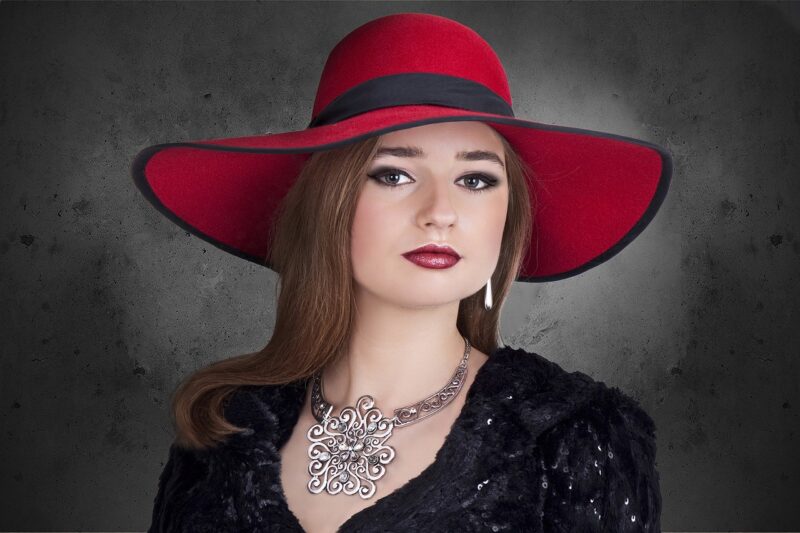The Evolution of Jewelry: From Ancient Adornments to Modern Trends
November 15, 2024

Jewelry has long been a symbol of beauty, status, and expression. Its evolution is a fascinating reflection of human creativity and cultural significance spanning thousands of years. From the primitive adornments of our ancestors to the sophisticated pieces crafted by today’s artisans, jewelry tells a story more profound than mere decoration.
1. The Beginnings: Jewelry in Ancient Civilizations
Jewelry dates back to the prehistoric era, with the earliest pieces frequently made from natural items like shells, bones, and stones. These early adornments were often used for both aesthetic and spiritual purposes.
In ancient Egypt, jewelry played a pivotal role in society and religion. Egyptians crafted intricate pieces adorned with gold, turquoise, and lapis lazuli, believing these items offered protection in the afterlife. Symbols like the ankh and scarab beetle were commonly used, representing life and rebirth.
In Mesopotamia, similar practices emerged, with intricate gold and silver jewelry representing wealth and power. The famous Sumerian beads—crafted from precious stones and intricately designed—showcase the sophistication of early craftsmanship.
2. The Influence of Ancient Greece and Rome
As we move into the classical era, both Greeks and Romans began to innovate the field of jewelry making. Greek jewelry was characterized by intricate designs and the use of gemstones, often depicting mythological themes.
The Romans took this further, focusing on not only aesthetic appeal but also the status conveyed by jewelry. They popularized the use of engraved gems and the concept of signet rings to represent family authority. Rome was also pivotal in introducing elaborate goldsmith techniques, enabling the creation of more delicate and visually complex pieces.
3. The Middle Ages: Symbolism and Significance
The Middle Ages marked a significant shift in jewelry design; pieces often reflected religious beliefs and societal hierarchies. A notable trend was the rise of religious jewelry: crosses, rings, and brooches adorned with intricate religious imagery became commonplace, serving both as decoration and expressions of faith.
During this period, gemstones were imbued with specific meanings—red rubies represented love, while green emeralds depicted hope. In addition to personal adornment, jewelry began to serve as tokens of power and authority, particularly through royal and noble families who used jewelry to signify their status.
The art of jewelry making flourished in this era with the rise of guilds in Europe, ensuring that skilled craftsmen upheld high standards of quality and design.
4. The Renaissance: Revival of Art and Innovation
The Renaissance brought forth an explosion of creativity and innovation, revitalizing the art of jewelry making. This period saw the revival of classical motifs, along with the introduction of new techniques in enamelwork and gem setting.
Jewelry was no longer merely a status symbol; it became a form of personal expression. The introduction of intricate designs and the use of gemstones further elevated its allure among the European aristocracy, marking an age where individuals wore pieces as an extension of their identity.
Fashion began to play a crucial role in jewelry trends, as styles changed rapidly and evolved harmoniously with the garments of the time.
5. The Baroque and Rococo Eras: Extravagance Personified
The Baroque period (17th century) was characterized by boldness and opulence in jewelry design. Heavy and ornate pieces featuring large gemstones and pearls became highly sought after by the wealthy.
This era saw an embrace of asymmetry and ornate motifs, aligning with the overall artistic movements of the time.
Following this, the Rococo era emphasized lightness and elegance, often celebrating nature through floral motifs and soft colors. Creative jewelry designs from florals to delicate lace patterns became wildly popular. This period marked a significant transition into wearing jewelry for social occasions rather than just for display of wealth.
6. The Industrial Revolution: Democratising Jewelry
The Industrial Revolution in the 19th century changed the landscape of jewelry making, introducing machines that allowed for mass production. This democratization of jewelry provided access to adornments for the middle class, which had become increasingly affluent.
New materials, including lower-cost alternatives like paste gems and silver, flooded the market, ushering in an age where everyone could enjoy jewelry without straining their finances. This period also birthed the Victorian era, marked by jewelry trends that represented emotions, such as mourning jewelry that incorporated hair or images of the deceased.
7. The 20th Century: Modernism and Statement Pieces
As we transited into the 20th century, jewelry underwent a significant transformation with the rise of art movements such as Art Nouveau, Art Deco, and the influence of modernism.
Art Nouveau emphasized organic forms and fluid lines, whereas Art Deco embraced geometric patterns and bold colors. Jewelry became highly stylized and elaborate, often used as a statement of individuality and artistic expression.
The mid-20th century further included a shift in trends, favoring minimalist designs that incorporated both precious and unconventional materials.
8. The Present Day: Ethical Trends and Personalisation
Today, the jewelry industry is thriving with endless possibilities. Current trends delve into personalization; custom-made pieces that reflect individual stories, beliefs, and milestones are in high demand.
Additionally, there has been a notable shift towards sustainability, with consumers becoming increasingly conscious of the ethical implications of their purchases.
Brands are embracing recycled materials, ethically sourced stones, and transparent production processes, seeking to resonate with a more socially aware clientele.
Furthermore, advancement in technology means that concepts like 3D printing and innovative design techniques are shaping the future of jewelry, enabling unprecedented levels of customization and creativity.
Conclusion: A Timeless Art Form
The journey of jewelry from ancient adornments to modern trends is a testament to human ingenuity and evolving societal values. Jewelry continues to serve various functions—expressing individuality, marking life milestones, and conveying cultural significance. As we look to the future, the potential for innovation and expression in the world of jewelry remains limitless, promising a continuation of its enduring legacy across cultures and generations.






